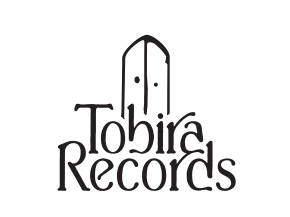クイックビュー
{"id":8984449122554,"title":"Ignez \/\/ SMV011 12inch","handle":"ignez-smv011-12inch","description":"\u003cp\u003eドイツ・ベルリンのテクノ作家Ignezが、2025年6月にオランダ・アムステルダムのテクノレーベルSomov Recordsからリリースした12\"です。\u003c\/p\u003e\n\u003cp\u003eフロアバーニングなディープテクノ4曲を収録。\u003c\/p\u003e\n\u003cp\u003e\u003ca href=\"https:\/\/tobirarecords.com\/products\/ignez-rodhad-vermillion-12\"\u003e前作\u003c\/a\u003eもオススメです。\u003c\/p\u003e\n\u003cp\u003e\u003ciframe src=\"https:\/\/w.soundcloud.com\/player\/?url=https%3A\/\/api.soundcloud.com\/tracks\/soundcloud%253Atracks%253A2091846300\u0026amp;color=%23ff5500\u0026amp;auto_play=false\u0026amp;hide_related=false\u0026amp;show_comments=true\u0026amp;show_user=true\u0026amp;show_reposts=false\u0026amp;show_teaser=true\" height=\"166\" width=\"100%\"\u003e\u003c\/iframe\u003e\u003c\/p\u003e\n\u003cdiv style=\"font-size: 10px; color: #cccccc; line-break: anywhere; word-break: normal; overflow: hidden; white-space: nowrap; text-overflow: ellipsis; font-family: Interstate,Lucida Grande,Lucida Sans Unicode,Lucida Sans,Garuda,Verdana,Tahoma,sans-serif; font-weight: 100;\"\u003e\n\u003ca style=\"color: #cccccc; text-decoration: none;\" title=\"somov\" href=\"https:\/\/soundcloud.com\/somov-records\" target=\"_blank\"\u003esomov\u003c\/a\u003e · \u003ca style=\"color: #cccccc; text-decoration: none;\" title=\"SMV011 - Ignez\" href=\"https:\/\/soundcloud.com\/somov-records\/smv011-ignez\" target=\"_blank\"\u003eSMV011 - Ignez\u003c\/a\u003e\n\u003c\/div\u003e\n\u003cp\u003eレーベルその他作品は\u003ca href=\"https:\/\/tobirarecords.com\/collections\/somov\"\u003eこちら\u003c\/a\u003e \/\/\/ Click \u003ca href=\"https:\/\/tobirarecords.com\/collections\/somov\"\u003ehere\u003c\/a\u003e to see more Somov Records releases available at Tobira.\u003c\/p\u003e\n\u003cp\u003e----------------------------------------------\u003c\/p\u003e\n\u003cp\u003e12\" black vinyl.\u003c\/p\u003e\n\u003cp\u003e\u003cstrong\u003eTracklist\u003c\/strong\u003e:\u003c\/p\u003e\n\u003cp class=\"MsoNormal\"\u003e1. White Rose 06:25\u003cbr\u003e2. Satindancer 05:19\u003cbr\u003e\u003cspan style=\"font-family: -apple-system, BlinkMacSystemFont, 'San Francisco', 'Segoe UI', Roboto, 'Helvetica Neue', sans-serif; font-size: 0.875rem;\"\u003e3. Immersion 06:20\u003cbr\u003e\u003c\/span\u003e\u003cspan style=\"font-family: -apple-system, BlinkMacSystemFont, 'San Francisco', 'Segoe UI', Roboto, 'Helvetica Neue', sans-serif; font-size: 0.875rem;\"\u003e4. Skies We Share 05:51\u003c\/span\u003e\u003c\/p\u003e\n\u003cp\u003eArtist : Ignez\u003c\/p\u003e\n\u003cp\u003eLabel : Somov Records\u003c\/p\u003e\n\u003cp\u003ecat no : \u003cmeta charset=\"utf-8\"\u003e\u003cspan\u003eSMV011\u003c\/span\u003e\u003c\/p\u003e","published_at":"2025-11-07T17:53:40+09:00","created_at":"2025-11-05T11:22:37+09:00","vendor":"Tobira Records","type":"","tags":["lp","new","somov","techno \/ house"],"price":312500,"price_min":312500,"price_max":312500,"available":true,"price_varies":false,"compare_at_price":null,"compare_at_price_min":0,"compare_at_price_max":0,"compare_at_price_varies":false,"variants":[{"id":47902591090938,"title":"Default Title","option1":"Default Title","option2":null,"option3":null,"sku":null,"requires_shipping":true,"taxable":true,"featured_image":null,"available":true,"name":"Ignez \/\/ SMV011 12inch","public_title":null,"options":["Default Title"],"price":312500,"weight":430,"compare_at_price":null,"inventory_management":"shopify","barcode":"","requires_selling_plan":false,"selling_plan_allocations":[]}],"images":["\/\/tobirarecords.com\/cdn\/shop\/files\/ig1_513ecaf7-a6fd-49b1-b960-d9028585818c.jpg?v=1762309286","\/\/tobirarecords.com\/cdn\/shop\/files\/ig2_6673318c-48c3-496f-9248-39af144ff947.jpg?v=1762309286"],"featured_image":"\/\/tobirarecords.com\/cdn\/shop\/files\/ig1_513ecaf7-a6fd-49b1-b960-d9028585818c.jpg?v=1762309286","options":["Title"],"media":[{"alt":null,"id":37400456200442,"position":1,"preview_image":{"aspect_ratio":1.0,"height":700,"width":700,"src":"\/\/tobirarecords.com\/cdn\/shop\/files\/ig1_513ecaf7-a6fd-49b1-b960-d9028585818c.jpg?v=1762309286"},"aspect_ratio":1.0,"height":700,"media_type":"image","src":"\/\/tobirarecords.com\/cdn\/shop\/files\/ig1_513ecaf7-a6fd-49b1-b960-d9028585818c.jpg?v=1762309286","width":700},{"alt":null,"id":37400456233210,"position":2,"preview_image":{"aspect_ratio":1.688,"height":711,"width":1200,"src":"\/\/tobirarecords.com\/cdn\/shop\/files\/ig2_6673318c-48c3-496f-9248-39af144ff947.jpg?v=1762309286"},"aspect_ratio":1.688,"height":711,"media_type":"image","src":"\/\/tobirarecords.com\/cdn\/shop\/files\/ig2_6673318c-48c3-496f-9248-39af144ff947.jpg?v=1762309286","width":1200}],"requires_selling_plan":false,"selling_plan_groups":[],"content":"\u003cp\u003eドイツ・ベルリンのテクノ作家Ignezが、2025年6月にオランダ・アムステルダムのテクノレーベルSomov Recordsからリリースした12\"です。\u003c\/p\u003e\n\u003cp\u003eフロアバーニングなディープテクノ4曲を収録。\u003c\/p\u003e\n\u003cp\u003e\u003ca href=\"https:\/\/tobirarecords.com\/products\/ignez-rodhad-vermillion-12\"\u003e前作\u003c\/a\u003eもオススメです。\u003c\/p\u003e\n\u003cp\u003e\u003ciframe src=\"https:\/\/w.soundcloud.com\/player\/?url=https%3A\/\/api.soundcloud.com\/tracks\/soundcloud%253Atracks%253A2091846300\u0026amp;color=%23ff5500\u0026amp;auto_play=false\u0026amp;hide_related=false\u0026amp;show_comments=true\u0026amp;show_user=true\u0026amp;show_reposts=false\u0026amp;show_teaser=true\" height=\"166\" width=\"100%\"\u003e\u003c\/iframe\u003e\u003c\/p\u003e\n\u003cdiv style=\"font-size: 10px; color: #cccccc; line-break: anywhere; word-break: normal; overflow: hidden; white-space: nowrap; text-overflow: ellipsis; font-family: Interstate,Lucida Grande,Lucida Sans Unicode,Lucida Sans,Garuda,Verdana,Tahoma,sans-serif; font-weight: 100;\"\u003e\n\u003ca style=\"color: #cccccc; text-decoration: none;\" title=\"somov\" href=\"https:\/\/soundcloud.com\/somov-records\" target=\"_blank\"\u003esomov\u003c\/a\u003e · \u003ca style=\"color: #cccccc; text-decoration: none;\" title=\"SMV011 - Ignez\" href=\"https:\/\/soundcloud.com\/somov-records\/smv011-ignez\" target=\"_blank\"\u003eSMV011 - Ignez\u003c\/a\u003e\n\u003c\/div\u003e\n\u003cp\u003eレーベルその他作品は\u003ca href=\"https:\/\/tobirarecords.com\/collections\/somov\"\u003eこちら\u003c\/a\u003e \/\/\/ Click \u003ca href=\"https:\/\/tobirarecords.com\/collections\/somov\"\u003ehere\u003c\/a\u003e to see more Somov Records releases available at Tobira.\u003c\/p\u003e\n\u003cp\u003e----------------------------------------------\u003c\/p\u003e\n\u003cp\u003e12\" black vinyl.\u003c\/p\u003e\n\u003cp\u003e\u003cstrong\u003eTracklist\u003c\/strong\u003e:\u003c\/p\u003e\n\u003cp class=\"MsoNormal\"\u003e1. White Rose 06:25\u003cbr\u003e2. Satindancer 05:19\u003cbr\u003e\u003cspan style=\"font-family: -apple-system, BlinkMacSystemFont, 'San Francisco', 'Segoe UI', Roboto, 'Helvetica Neue', sans-serif; font-size: 0.875rem;\"\u003e3. Immersion 06:20\u003cbr\u003e\u003c\/span\u003e\u003cspan style=\"font-family: -apple-system, BlinkMacSystemFont, 'San Francisco', 'Segoe UI', Roboto, 'Helvetica Neue', sans-serif; font-size: 0.875rem;\"\u003e4. Skies We Share 05:51\u003c\/span\u003e\u003c\/p\u003e\n\u003cp\u003eArtist : Ignez\u003c\/p\u003e\n\u003cp\u003eLabel : Somov Records\u003c\/p\u003e\n\u003cp\u003ecat no : \u003cmeta charset=\"utf-8\"\u003e\u003cspan\u003eSMV011\u003c\/span\u003e\u003c\/p\u003e"}







